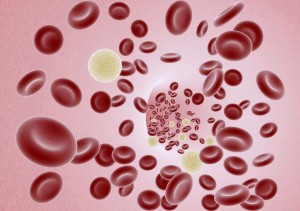 By Megan Crockart, Nutritionist
By Megan Crockart, Nutritionist
Further to my article last month on Insulin Resistance and Metabolic Syndrome, this month I will focus primarily on Type 2 Diabetes.
Every day 280 Australians develop diabetes and in the past year 100,000 Australians have been diagnosed with Type 2 diabetes. In 2010, it was estimated worldwide that 285 million adults had diabetes and the forecast is that by 2030 the figure will be around 439 million.
Our expanding waistlines is a large contributor to these increased numbers. The National Health Performance Authority reported that 63% of Australians are either overweight or obese (2011-2012). Monash University last year predicted that by 2025 close to 80% of all Aussie adults and 1/3 of all children will be overweight or obese.
You have just been bombarded with a lot of statistics to highlight the epidemic this already is, plus the increasing amount of people who are heading towards this incurable disease. And these statistics are based on the people who actually know and have been diagnosed!
Type 1 Diabetes
Type 1 Diabetes affects a smaller percentage of people and usually starts at an early age, often called Juvenile Diabetes (although adults have been known to be diagnosed with Type 1 and not Type 2). It is an autoimmune disease in that the body attacks and destroys the insulin producing beta (“b”) cells in the pancreas. Therefore this leads to the pancreas being unable to produce any insulin (or very minimal amounts). Insulin then needs to be injected to control blood sugar levels. There is still no exact known cause or risk factors.
Type 2 Diabetes
This has been given various names including sugar diabetes, adult-onset diabetes and non-insulin-dependent diabetes mellitus. I will just refer to it as diabetes as now it is the most common form and it doesn’t only affect adults, but more children and teenagers are being diagnosed. Plus some people with Type 2 diabetes actually do need to inject themselves with insulin.
Diabetes differs from Type 1 as the pancreatic b cells are still producing insulin, just not in the right amounts to deal appropriately with the glucose in the blood which leads to high blood glucose levels.
The “western” diet of highly processed, fried fatty foods with too much salt and sugar plus increased inactivity has contributed to the world’s growing obesity rates.
Obesity is the one of the main causes of diabetes and there is the suggestion that genetics plays a role as well. Some people of healthy weight can develop diabetes if there is a strong genetic tendency. Other risk factors include:
- Insulin resistance
- Metabolic syndrome
- Pre-diabetes – this is where the body has impaired fasting glucose or impaired glucose tolerance
- Polycystic ovarian syndrome
- Physical inactivity
- Certain drugs
- Smoking
- Aboriginal, Torres Strait Islander, Maori, Pacific Islander, Hispanic, Native American and Asian populations 35 years of age and over.
There is more information coming to hand and although all diagnoses are still based around blood glucose level readings (the consumption of sugar being a trigger), there is more knowledge on how body fat can play a significant role. Adipose tissue (body fat) is now being regarded as an endocrine organ which can alter blood pressure, lipid and glucose metabolism, inflammation and atherosclerosis. Therefore reducing our adipose tissue is crucial. Although having said that, not all body fat is bad (we do need some fat), it only becomes an issue if this adipose tissue starts to dysfunction. Dysfunctional adipose tissue can impact negatively on the metabolism of other tissues, regulation of appetite, insulin sensitivity, immunological responses and vascular disease.
Monitoring blood pressure levels, triglycerides, cholesterol ratios, inflammatory markers, cortisol levels as well as various blood glucose indicators is a good way to keep dysfunctional adipose tissue in check.
 Diabetes can be managed in many ways, but if not managed, over time can lead to such complications including:
Diabetes can be managed in many ways, but if not managed, over time can lead to such complications including:
- Blindness
- Kidney failure
- Heart disease, cardiovascular disease including stroke
- Limb amputations
- Nerve damage
Diabetes is still a preventable disease (although not curable), and can be prevented with various dietary, lifestyle choices and addressing nutritional requirements such as:
- Low GI diet/Low carbohydrate diet
- Reduced saturated fats
- Maintenance of healthy weight/weight loss
- Increased physical activity and exercise
- Reducing alcohol
- Quitting smoking
- Nutritional supplements can be beneficial
Gestational Diabetes
This term is given to women whose body isn’t producing enough insulin to maintain healthy blood glucose levels while they are pregnant. The incidence of gestational diabetes is also increasing. Although gestational diabetes usually resolves post pregnancy, it does increase the woman’s risk of developing diabetes and can increase the baby’s risk of developing diabetes later in life. If not maintained can result in the baby being too large, miscarriage or even stillbirth.
If you are concerned that you might be insulin resistant, have metabolic syndrome or have diabetes, book an appointment with Megan to discuss further. Particularly if you have a family history of diabetes it is worth checking out whether your genetics and lifestyle may be leading you in this direction. Prevention is better than management!
*References available on request

One Response to Diabetes – Is it all about sugar?